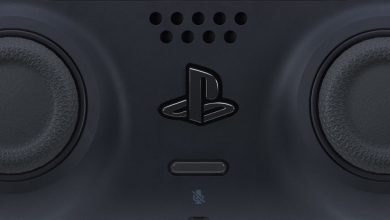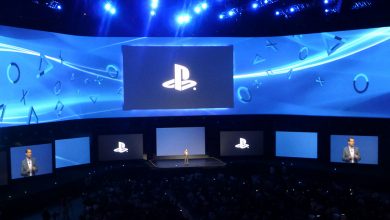Popular culture and the Mayan calendar dictate that the 2012 is the end of the world. Others are of the opinion that it would be the end of an era rather than that of existence itself. I’m more likely to believe the latter. “Why?” you might ask, followed by, “What in the name of Kapil Sibal does this have to do with the Vita?” Well, everything. The signs are all there.

The tech hardware brands we’ve known and loved have been in decline for a while; Nokia, HP, RIM and Sony to name some. A few are even on the brink of total collapse. Sony’s been haemorrhaging for a few years. What was once a company known for its prowess and innovation in the tech space has been slow to adopt important trends. Be it the not too well-implemented online system that is PSN, or the late to market but desirable tablet range, you can’t help but feel that they’ve missed a trick or twenty.
And this is why I hope the Vita will change all of that. From a technical standpoint, it is sound with a 4-core processor, 512 MB of RAM and 128 MB of VRAM. You have an OLED 5-inch touchscreen display and all the buttons you need to mimic the definitive portable Playstation experience. But this is all par for the course; where the Vita really shines is its sheer wealth of controls. There’s a rear touchpad, a very responsive touchscreen, and all the lovely crosses, squares, circles and triangles you’d find on a DS3 with the requisite (and much clamoured for) dual analog sticks. Throw in enough graphical might to conjure drop dead gorgeous titles such as Uncharted: Golden Abyss at launch and you have a very compelling proposition even for the staunchest of Sony detractors.

Of course, having PS3 quality titles in the palm of your hands is only solving half of the problem, much like the original PSP. The variety of controls make all the difference. During my playthrough of Uncharted, I found myself using the touchscreen to control Drake’s jumps, the rear touchpad to have him rappel down ropes, and shoulder buttons to shoot. While it might sound humdrum, the fact is that it led to an extremely intuitive experience that most physical button or touchscreen-only games lacked all while giving those who are afraid of the complexity of “next-gen” gaming an option to use the touchscreen. For me, the biggest advantage was the veritable buffet of control mechanisms at my disposal. I can’t wait to see how other developers make use of this functionality in upcoming titles; there’s a ton of promise in it.
Of course, the controls would be nothing if the device itself was poorly built. The Vita, however, is anything but. This is one console built to last. There’s a certain sturdiness about it that reminds me a lot of the first-gen PSPs. It feels solid, nice to hold and isn’t too light to be thought of as inconsequential. It doesn’t have a cheap plastic feel or fragile build like the PSP 2000 and 3000 series of handhelds. The long and short of it – it feels just right. So much so that I hope Sony doesn’t skimp on materials for the all but obvious second iteration.

Speaking of the PSP, if you haven’t figured out by now, the Vita is shaped just like it. A huge “super oval” screen is the centre of focus and decorated with buttons on either side. The display is fantastic. Measuring 5 inches, the 960×544 OLED takes up most of the real estate. It does a great job of showcasing the action even in sunlight. Furthermore, the images on the screen remain clear regardless of your position. The viewing angles are excellent, much unlike the cameras that function at very rudimentary 640×480 resolution and lack the ability to take videos, though they would take advantage of AR apps and video chat in the future.
There are some iPhone influences in the form of silver volume buttons and the metallic trim around the device, but nothing so obvious as to be lawsuit worthy. My only grouse is that the flaps which house the game card, Vita memory card and peripheral slot feel cheap and out of place. They’re easy to open and use, but lack the same build and finesse that have gone into the rest of the system, having more in common with budget digital camera memory slots than a high-end beast of a gaming handheld. That aside, there’s a decided thought of going for function over form that doesn’t stop the Vita from being a very attractive device.

The sex appeal doesn’t stop with its looks. Gone is the all too familiar XrossMediaBar (XMB) that was on the PS3 and PSP. In its place is a UI built from the ground up called Live Area. The entire interface is controlled via touchscreen alone. Each app is a circle arranged on the screen. Press an app to get details such as its digital manual or website. Long pressing an app gives you further information such as last date it was updated, memory size, parental controls, info on whether you can earn trophies from it, and letting you move or delete the app. If you’ve used an iOS or Android device before, you’d find this fairly intuitive.
The corners of the screen are reserved for contextual actions. For example, the top right corner is for notifications such as trophies and friend requests, while the bottom right corner is for inputting download codes or checking the status of a download when on the PS Store. Pressing the PS button shows you the apps that are currently open, such as browser, games or notifications. Hold it and you can toggle brightness, mic, volume and chat options. It would be a smidgen better if you could use the the physical buttons to control the UI as well. At the moment, you can’t even use the d-pad to scroll through a web page.

Turn it on the first time, and you’re greeted by a fairly simple activation process. You enter the time and language followed by setting up your PSN account. It’s at this point that things get slightly iffy. I was asked to update the system’s firmware before I could access PSN, but I could not download it at that very moment because there was no option present to download it immediately. Nevertheless, I skipped that step, downloaded the update via the Settings section and entered my PSN credentials.
There’s a Content Manager as well to help you back up and manage your profile, saves, music and videos. It works like a breeze on PCs and is way more user friendly than MediaGo ever was, and much less of a system hog. Using it is a simple process of going through your files on the Vita’s screen and choosing what you want to copy. Sadly, there’s no support for Mac users just yet, which is a bit of a downer as is the lack of wireless transfer.
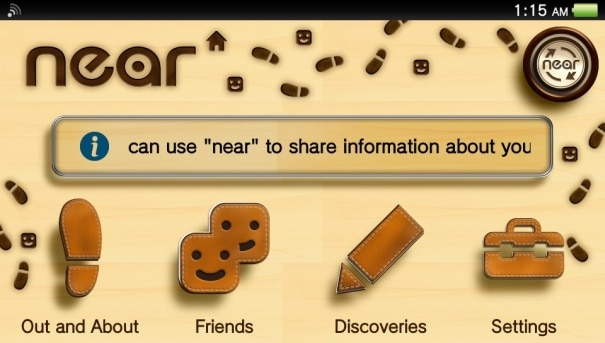
The Vita comes preloaded with some apps. First up is Welcome Park. It’s a basic tutorial that acclimatises you to the console’s features such as the touchscreen, cameras and rear touchpad with simple mini-games. It’s easy to use and smartly thought out. And if you think you’re familiar enough with the Vita to not bother, there are Trophies to be earned for completing them, which should ensure you play through it at least once.
Then there’s Near. This app lets you know what people in your local area are playing and shares your data with them as well. You can leave feedback for games as well. The problem with Near is that its way too convoluted to set up. Sometimes I could not access certain features because I was sharing too little of my information when in fact the settings page said otherwise. Sony would be wise to rehaul this app so it is easier to use. In its current state, it is definitely the low-point of the system; tragic given that there’s so much potential hiding underneath its cumbersome design.

Other apps include Party and Group Messaging. Party lets you chat with up to eight people on your friends list and lets you join their existing game sessions. Group messaging lets you chat with four, but allows you to send photos as well. Both let you communicate with PS3 users too. There’s also the Friends app that lets you see what your friends are playing and check out their Trophies as well as sync your own.
At the time of writing, Twitter is available but that’s for Hong Kong and Japanese users only. There are a few native Japanese video sharing apps, but those aren’t exactly user friendly for non-Japanese speakers. I switched to my Hong Kong account to check Twitter out and was pleasantly surprised. The Live Tweet app from Sony is as good, if not better, than Twitter’s native client for smartphones. It would be interesting how they execute Facebook and other social media apps running on the Vita.
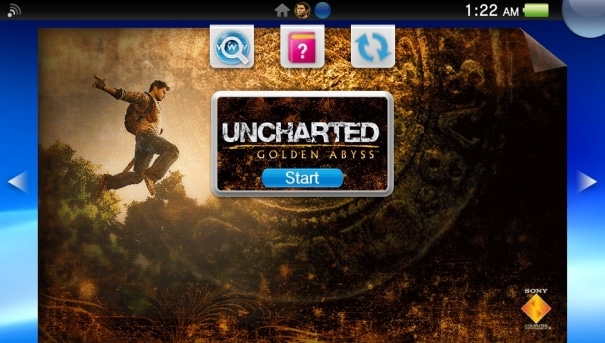
In terms of battery-life, I ended up getting around 4.5 to 5 hours with heavy use, mainly switching between Uncharted and Ultimate Marvel vs Capcom 3. Wi-fi was on and brightness between 50-70%. The charging times are fast, clocking under three hours. The Vita can be charged via USB as well. On putting it to charge, the PS button turns orange. When you receive a notification, it turns blue.
And while we’re on the topic of blue, that’s how I felt when I couldn’t test out my PSP games on the device since I’m locked out of my US store purchases until the official launch. From all accounts, compatibility seems to be good, complete with button remapping for a few titles.
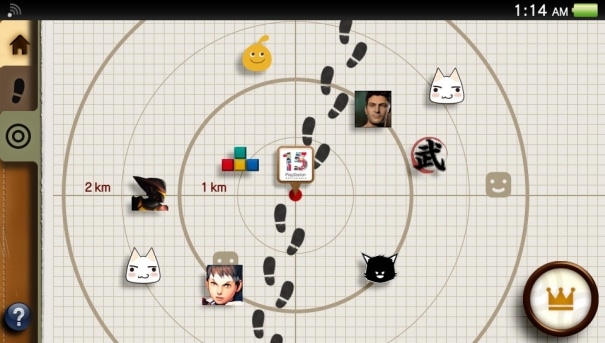
Minor niggles and quirks aside, the PS Vita is perhaps the most significant launch from Sony in recent memory. Could it be their deus ex machina that prevents the end of their era? I hope so. It has a lot going for it. It’s one part evolution with its graphical clout and one part revolution due to the slew of control options. One can argue that smartphones are killing the handheld market, but at this point, you really cannot compare a $0.99 app or even a $6.99 app to a fully fledged adventure such as Uncharted simply because the production values and experience wildly differ. Compared to the 3DS, it lags behind simply due to Nintendo’s 11 month lead and strong exclusives such as Mario Kart 7 and Super Mario 3D Land. That however, would change with time.
Conclusion
For us not so lucky Third World gamers, it all hinges on the price. And I hope for Kaz Hirai’s sake, that they price it reasonably because as it stands, all the ingredients for success are there in terms of hardware. It’s just a question of delivering killer games. Considering how good the US and EU launch line ups are looking, it would be sooner rather than later. Simply put, if you had to buy a handheld at launch, the Vita should be right at the top of your list. In fact, Uncharted alone warrants the cost of entry. Sony have created what quite possibly is, the best handheld on the market.


